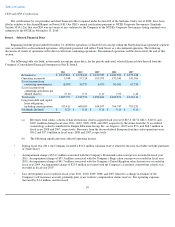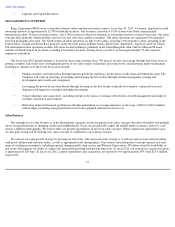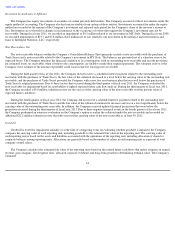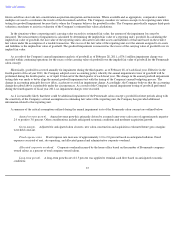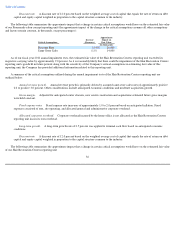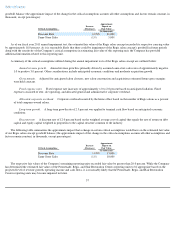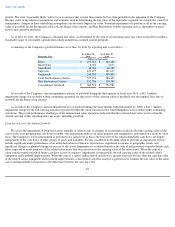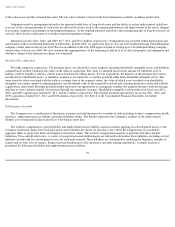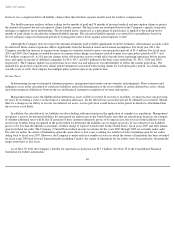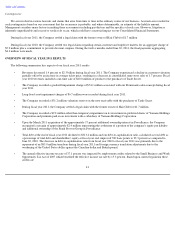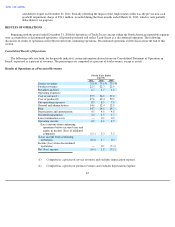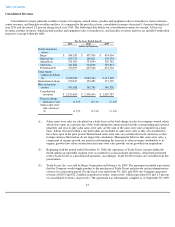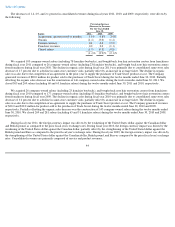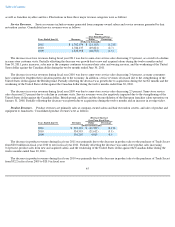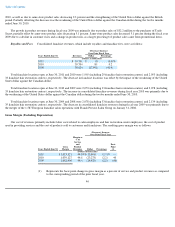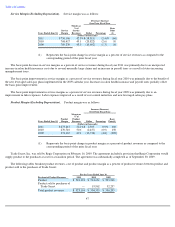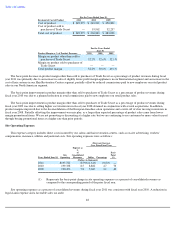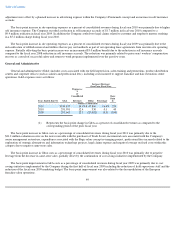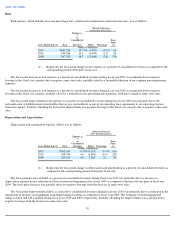Supercuts 2011 Annual Report Download - page 42
Download and view the complete annual report
Please find page 42 of the 2011 Supercuts annual report below. You can navigate through the pages in the report by either clicking on the pages listed below, or by using the keyword search tool below to find specific information within the annual report.
Table of Contents
however, it is a single model for all liability claims rather than the three separate models used for workers' compensation.
The health insurance analysis utilizes trailing twelve months of paid and 24 months of incurred medical and prescription claims to project
the amount of incurred but not yet reported claims liability amount. The lag factors are developed based on the Company's specific claim data
utilizing a completion factor methodology. The developed factor, expressed as a percentage of paid claims, is applied to the trailing twelve
months of paid claims to calculate the estimated liability amount. The calculated liability amount is reviewed for reasonableness based on
reserve adequacy ranges for historical periods by testing prior reserve levels against actual expenses to date.
Although the Company does not expect the amounts ultimately paid to differ significantly from the estimates, self insurance accruals could
be affected if future claims experience differs significantly from the historical trends and actuarial assumptions. For fiscal year 2011, the
Company recorded an increase in expense from changes in estimates related to prior year open policy periods of $1.4 million. For fiscal years
2010 and 2009, the Company recorded decreases in expense from changes in estimates related to prior year open policy periods of $1.7 and
$9.9 million, respectively. A 10.0 percent change in the self-insurance reserve would affect income from continuing operations before income
taxes and equity in income of affiliated companies by $4.6, $4.5, and $4.0 million for the three years ended June 30, 2011, 2010 and 2009,
respectively. The Company updates loss projections twice each year and adjusts its recorded liability to reflect the current projections. The
updated loss projections consider new claims and developments associated with existing claims for each open policy period. As certain claims
can take years to settle, the Company has multiple policy periods open at any point in time.
Income Taxes
In determining income for financial statement purposes, management must make certain estimates and judgments. These estimates and
judgments occur in the calculation of certain tax liabilities and in the determination of the recoverability of certain deferred tax assets, which
arise from temporary differences between the tax and financial statement recognition of revenue and expense.
Management must assess the likelihood that deferred tax assets will be recovered. If recovery is not likely, we must increase our provision
for taxes by recording a reserve, in the form of a valuation allowance, for the deferred tax assets that will not be ultimately recoverable. Should
there be a change in our ability to recover our deferred tax assets, our tax provision would increase in the period in which it is determined that
the recovery is not likely.
In addition, the calculation of tax liabilities involves dealing with uncertainties in the application of complex tax regulations. Management
recognizes a reserve for potential liabilities for anticipated tax audit issues in the United States and other tax jurisdictions based on our estimate
of whether additional taxes will be due. If payment of these amounts ultimately proves to be unnecessary, the reversal of the liabilities would
result in tax benefits being recognized in the period when we determine the liabilities are no longer necessary. If our estimate of tax liabilities
proves to be less than the ultimate assessment, a further charge to expense would result. In the United States, fiscal years 2007 and after remain
open for federal tax audit. The Company's United States federal income tax returns for the years 2007 through 2009 are currently under audit.
For state tax audits, the statute of limitations generally spans three to four years, resulting in a number of states remaining open for tax audits
dating back to fiscal year 2007. However, the Company is under audit in a number of states in which the statute of limitations has been extended
for fiscal years 2000 and forward. Internationally (including Canada), the statute of limitations for tax audits varies by jurisdiction, but generally
ranges from three to five years.
As of June 30, 2011 the Company's liability for uncertain tax positions was $13.5 million. See Note 13 to the Consolidated Financial
Statements for further information.
40


